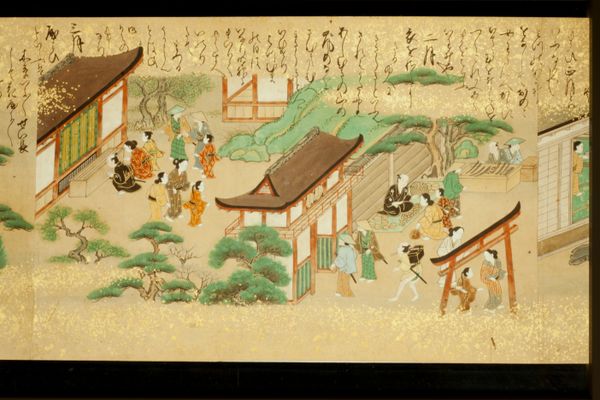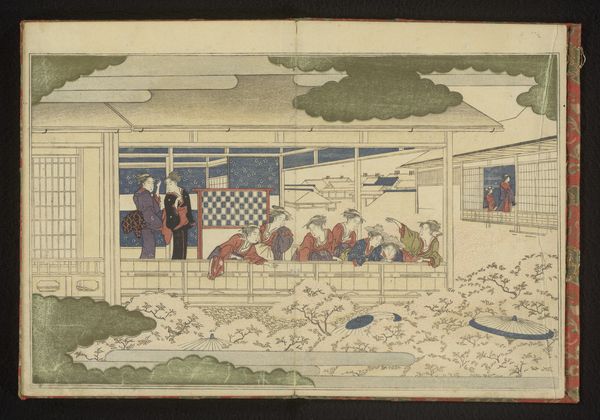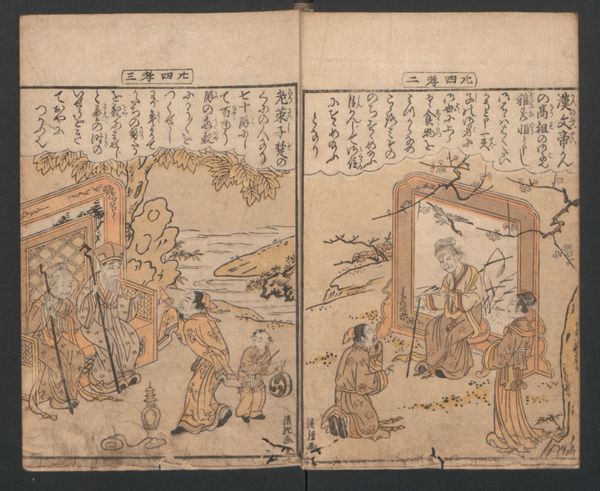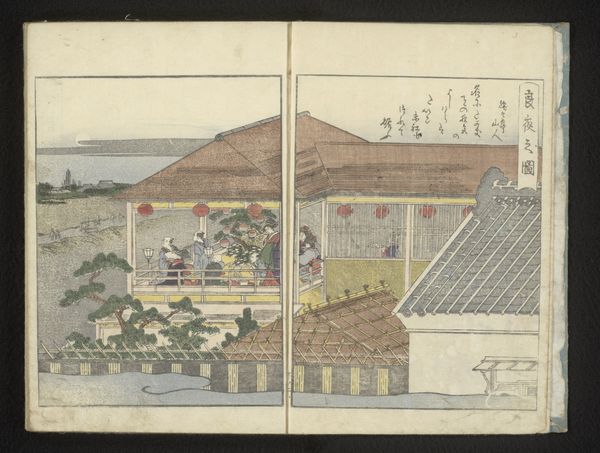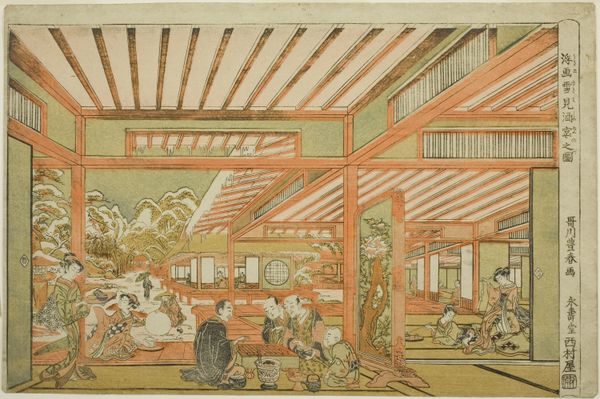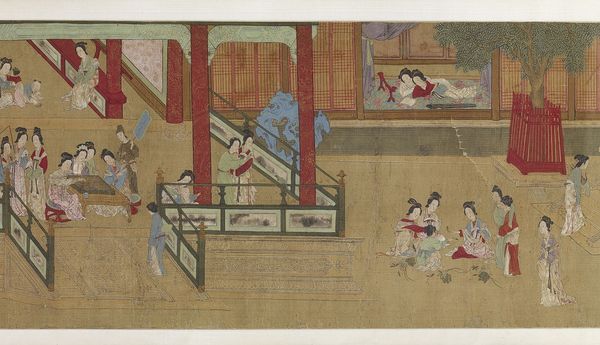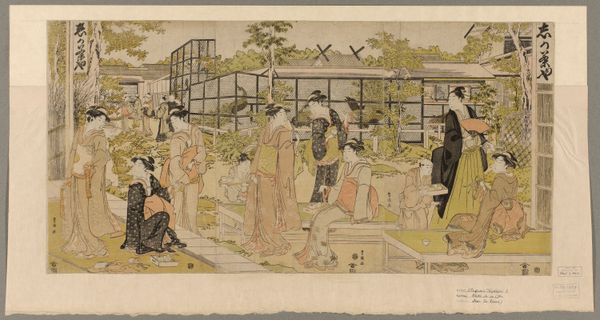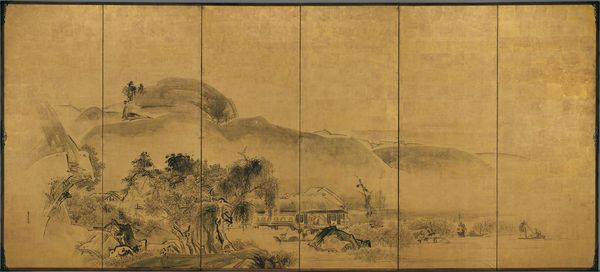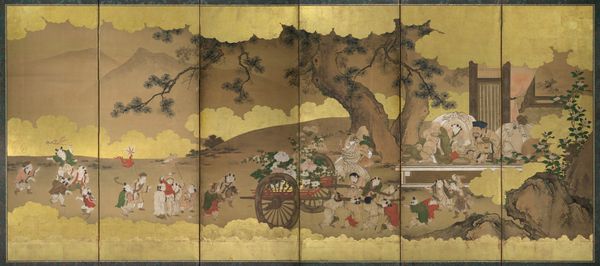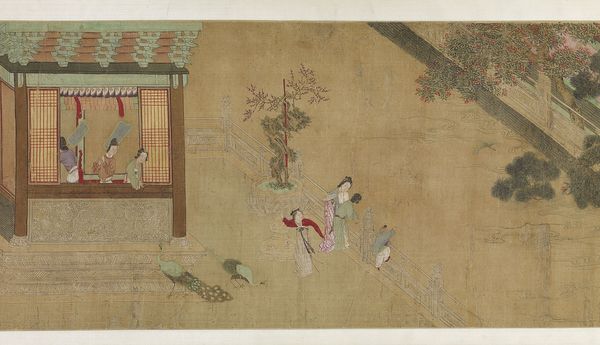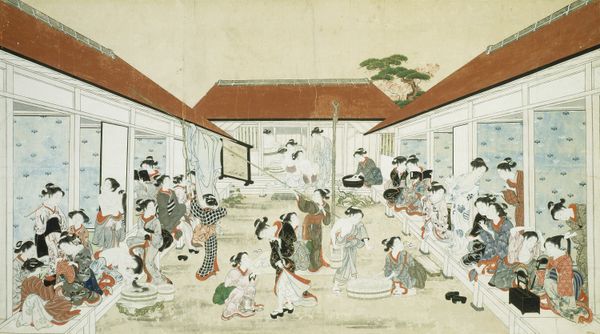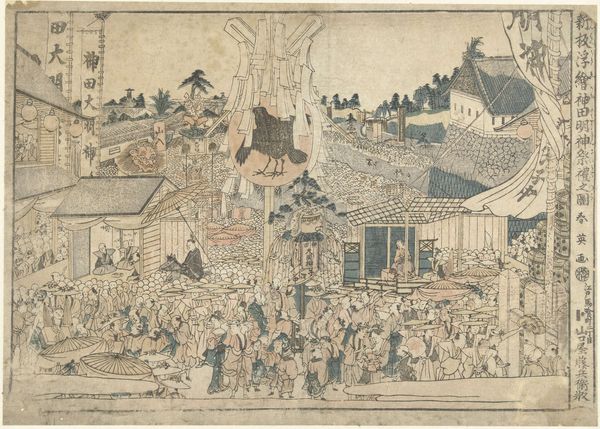
painting
#
portrait
#
painting
#
asian-art
#
landscape
#
ukiyo-e
#
figuration
#
cityscape
#
genre-painting
Dimensions: Image: 47 3/4 in. × 10 ft. 4 1/2 in. (121.3 × 316.2 cm)
Copyright: Public Domain
Curator: Welcome. We’re now viewing “Taking Shelter from the Rain” by Hanabusa Itchō, likely created sometime between 1700 and 1850. It’s currently housed here at the Metropolitan Museum of Art. Editor: It’s a screen, right? Such a serene, almost monochromatic palette despite the bustling scene it depicts. The figures seem to dissolve into the misty landscape, so soft and diffused. Curator: Indeed, it's a folding screen. A six-panel work, to be exact, and a lovely example of ukiyo-e's influence during the Edo period. These screens often served as backdrops to formal social occasions. Genre scenes were a popular topic. Editor: The composition is rather fascinating, too. Notice how Itchō employs atmospheric perspective? The recession into depth is beautifully rendered with subtle gradations in tone and clarity, making the figures feel diminutive. Curator: Which connects, naturally, with a worldview popular during that era. People's placement and movement throughout public, performative spaces reflects social conventions and hierarchy, not only on screen but in Japanese society at large. Editor: Although those details might evade the untrained eye. Instead, I see it more as an exercise in restraint. Itchō's conscious artistic choice makes the unfolding events less dramatic and lets the setting play a bigger role. Curator: While I see how his skill underscores those design choices, you cannot overlook how Itchō leverages themes popular amongst his literati and samurai patrons. These bustling scenes highlight societal values through depiction. How these paintings were consumed tells a tale of Japan’s evolving identity. Editor: Fair, but does this interpretation change the immediate effect of its pictorial balance, which seems both spontaneous and rigorously controlled? Curator: No. I agree the composition encourages close visual study—and historical and social context can then deepen that appreciation. We observe, then we research. Editor: Well put. It reminds us that engaging with art can simultaneously inform and evoke feelings across a divide of centuries.
Comments
No comments
Be the first to comment and join the conversation on the ultimate creative platform.
